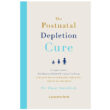As a certified nurse midwife (CNM) in the U.S. Army corps of nurses, Lieutenant Colonel Krista Labbe had a passion for “nurturing women and empowering them to understand their feminine genius and demand excellence in their healthcare.” This was her life’s mission until October 2023, when Krista unexpectedly took her own life, due to what her husband, Retired U.S. Army Master Sergeant Jamahl Labbe, believes was a mental breakdown brought on by the copper IUD. This is Krista’s—and Jamahl’s—story.
Krista’s quest for better women’s health solutions
One of the great tragedies of Krista’s story is that it is about a woman on a journey towards better care for her patients—and herself.
In fact, just a few years ago, Krista was looking for alternatives to synthetic hormones and their associated risks and side effects. As a midwife, Krista had an incredible heart for service and advocacy for her patients, and knew they deserved better care than what many were being offered. She was actively seeking out more information and training on better approaches to women’s health, and as a result, had signed up for an innovative hormone coaching program. In September 2023, she even attended an annual conference for medical professionals looking to increase their knowledge of fertility awareness and restorative reproductive medicine, making many friends and connections in the authentic women’s health space. Thus, it came as a shock to everyone who knew her when, tragically, Krista took her life just one month later in October 2023.
Krista’s death
By all accounts, Krista’s death was a complete surprise—a horrifying event that her husband, Jamahl, worked for months trying to make sense of. It was only upon receiving Krista’s military medical records several months after her passing, that Jamahl and Krista’s best friend, Retired U.S. Army Lieutenant Colonel Sabrina Bowers (a certified nurse midwife, like Krista), connected the dots between Krista’s mental breakdown and her on-and-off use of the copper IUD—the most recent of which she had inserted exactly one month prior to taking her life.
“No doubt she was experiencing a war within,” says Krista’s friend, Jamie Rathjen, about her repeated insertions and removals of the copper IUD, as evidenced by her medical records. “She would feel empowered to discontinue [the IUD], and then would get one placed again, and so on.” But the repeated infections, bleeding, and displacements (with one IUD actually falling out after a run) Krista experienced also led her to have multiple removals and insertions of the device, long before their expected expiration dates (10 years, according to the manufacturer).
Krista’s story is perhaps all the more tragic because of the journey that preceded it—evidenced by her search for better, non-hormonal options for both her patients and herself. Her turn towards the copper IUD for her own family planning was because of its promises as a non-hormonal form of contraception. After all, this is precisely the device’s appeal for countless other women. But as Jamahl’s subsequent discoveries about the copper IUD show, “hormone-free” does not necessarily mean risk-free. And he believes more women need to be informed of these potential risks.

More than depression: Krista’s breakdown
“Since my wife’s death,” wrote Jamahl on the website he has dedicated to his late wife, “I have insisted that her suicide was not solely a mental health crisis.” Krista had struggled with depression throughout her life, but this, he says, was something different.
Irrational thoughts and beliefs that could not be reasoned with
In the weeks following her last IUD insertion, Jamahl tells Natural Womanhood, “Krista’s fears and anxieties overwhelmed her completely, and these fears were not rooted in reality. I talked to her daily trying to help rationalize the thoughts she was having.”
“Thoughts like how she was ‘forgetting how to be a midwife’ after a brief period taken off of her work, even though she had been a practitioner for 20 years,” Jamahl continued. “She thought I would leave her after I continued to profess how much I loved her, how proud of her I was, and that I would always be next to her. She feared that she was pregnant with the IUD, even though she took several pregnancy tests showing negative results. And even with her strong relationship with Christ, she thought God was angry at her for providing women with birth control throughout her career.”
“I tried to ground her in the truth, and remind her of the enormous blessings we had in our lives, but she no longer could see it,” said Jamahl. “There were never any suicidal ideations, only an overwhelming anxiety that controlled her and clouded her thoughts every day. She lost the vision of our future that we had been creating together for years; she could no longer see it.”
Concerning physical symptoms
“There were also physical manifestations,” Jamahl continued. “I would often notice Krista manipulating her wrist in an odd manner. At the time I thought it was related to an old injury, but it was both hands she would manipulate. I also once walked into our kitchen to find her standing in complete confusion. I had to get her attention and remind her of the day’s agenda.”
Krista’s physical and mental symptoms were consistent with psychosis symptoms
Many of the symptoms Jamahl describes seeing in Krista fit within the behavioral changes that often precede psychosis, according to the National Institute of Mental Health (NIMH), which include:
- Suspiciousness, paranoid ideas, or uneasiness with others
- Trouble thinking clearly and logically
- Withdrawing socially and spending a lot more time alone
- Unusual or overly intense ideas, strange feelings, or a lack of feelings
- Decline in self-care or personal hygiene
- Disruption of sleep, including difficulty falling asleep and reduced sleep time
- Difficulty telling reality from fantasy
- Confused speech or trouble communicating
- Sudden drop in grades or job performance
Alongside these symptoms, a person with psychosis may also experience more general changes in behavior that include:
- Emotional disruption
- Anxiety
- Lack of motivation
- Difficulty functioning overall
Jamahl’s discovery: What Krista’s medical records showed
Initially, Jamahl had two suspicions about what might have precipitated the mental psychosis that led to Krista taking her life: a series of steroid injections, and her most recent copper IUD. After obtaining Krista’s medical records and combing through them with the help of Krista’s best friend Sabrina, Jamahl wrote this update on his website: “I knew that there was something physiological that occurred. I have always felt like something poisoned Krista, and now I have a form of proof.”
Krista’s medical records indicated that what Jamahl had thought were steroid injections were actually Platelet-Rich Plasma injections—and the onset of Krista’ psychosis symptoms did not coincide with the dates of the injections. So Jamahl and Sabrina then turned to their other suspicion—Krista’s multiple copper IUDs—the last of which her records indicated had been inserted around the time her behavioral changes began. In fact, Sabrina’s detailed review of Krista’s medical records showed that she had had four brand-new copper IUDs inserted over the course of less than eight years. Again, for context, a single copper IUD is meant to last for ten years.
Enter Rick Fischer and the specter of copper toxicity
Jamahl then did a deep dive online into copper IUDs, discovering class-action lawsuits, social media groups, podcasts, and articles dedicated to issues with the copper IUD in the process. Symptoms of copper toxicity (which involve neurological symptoms like psychosis) were a particular concern (along with device breakages–the subject of many current lawsuits). The mental health symptoms associated with the IUD sounded all too familiar to Jamahl, prompting him to have Krista’s hair analyzed at the urging of Rick Fischer, a copper toxicity expert, to whom Jamahl reached out for guidance.
Why hair? According to a WebMD article on hair tissue mineral analysis (HTMA): “A single hair can give a lot of information about you. The hair on your head grows 2-6 years before falling out. Many tiny blood vessels feed the base of each strand. During that time, your hair shaft absorbs chemicals from any drugs you take. It also contains sweat, your body’s natural oils, and any toxins around you.” Those toxins can include heavy metals, like copper.
Krista’s hair sample: “undoubtedly from someone who was copper toxic”
After harvesting every hair he could from Krista’s hairbrush, Jamahl sent the sample to a lab specializing in HTMA. The results were shocking: “Her copper levels and all the other associated trace minerals that pattern copper toxicity were raised through the charts,” wrote Jamahl. When Jamahl shared these results with Rick, Rick confirmed that Krista’s test results were “undoubtedly from someone who was copper toxic.”
“Krista’s professional life was dedicated to midwifery and women’s health,” Jamahl told Natural Womanhood, “and yet she was never informed about the potential adverse mental health effects of these copper IUDs.”
“Copper bursts,” toxicity, and psychosis
Jamahl has since learned that Krista’s multiple copper IUDs over the course of eight short years may have made the device extra deadly for her. “Rick informed us that when these devices are first inserted into a woman, there is a ‘burst’ of copper that is injected into their body,” wrote Jamahl.
According to this 2012 article from the journal Contraception, Fischer is right: “The copper intrauterine device is a contraceptive method that is based on the release of copper ions from a copper wire. Immediately after insertion, the dissolution of copper in the uterine fluid is markedly higher (“burst release”) than that necessary for contraception action, leading to a variety of harmful effects.” (These effects may also include the extremely heavy bleeding and cramping that many women experience in the initial months after copper IUD insertion–a well-known side effect of the device–which eventually lightens for many users, presumably as the initial “burst” subsides.)
But, according to Jamahl, Krista was never informed about the potential effects of repeated “copper bursts,” even as she had one copper IUD inserted after another for various reasons over the course of 8 years. It’s precisely these “bursts” that Jamahl believes led to Krista’s copper toxicity and eventual psychosis—and ultimately cost her life.
Jamahl’s mission—and Krista’s legacy
At merely 42 years old, Krista left behind not only Jamahl, her husband of over 12 years, but their three children, two brothers, parents, and countless friends, colleagues, and patients who daily mourn the loss of a loving wife, mother, friend, and advocate. Jamahl believes that Krista would still be here today if she (or he) had known about the potential risks and side effects of the copper IUD—especially repeated insertions of the device over a relatively short period of time. He directly attributes the psychosis that killed his wife to these repeated insertions, and has made it his mission to share her story as broadly as possible, in the hopes that no one else will go through what Krista endured–and what he, his children, and everyone else who knew and loved Krista, are now enduring.
For more on the risks of the copper IUD, including testimonies from other women who suffered psychosis after being fitted with copper IUDs, please click here.
This article was updated by Natural Womanhood on 1/14/2025 to correct the spelling of copper toxicity expert Rick Fischer’s last name.








I am very sorry for this family. You can experience severe /deadly psychosis (and more) from one copper iud (specifically the Paragard and with no pre-existing conditions, ect), and I wish they would take them off the market, as they are just too much of a risk. The least they could do is warn women what to look out for of this beginning to happen, and they don’t even do that. Thank you again for sharing.
Here is another story and I think it’s important to share until the company warns women
https://www.reddit.com/r/TwoXChromosomes/comments/rg18i/iuds_are_evil_and_mine_almost_killed_me_not/